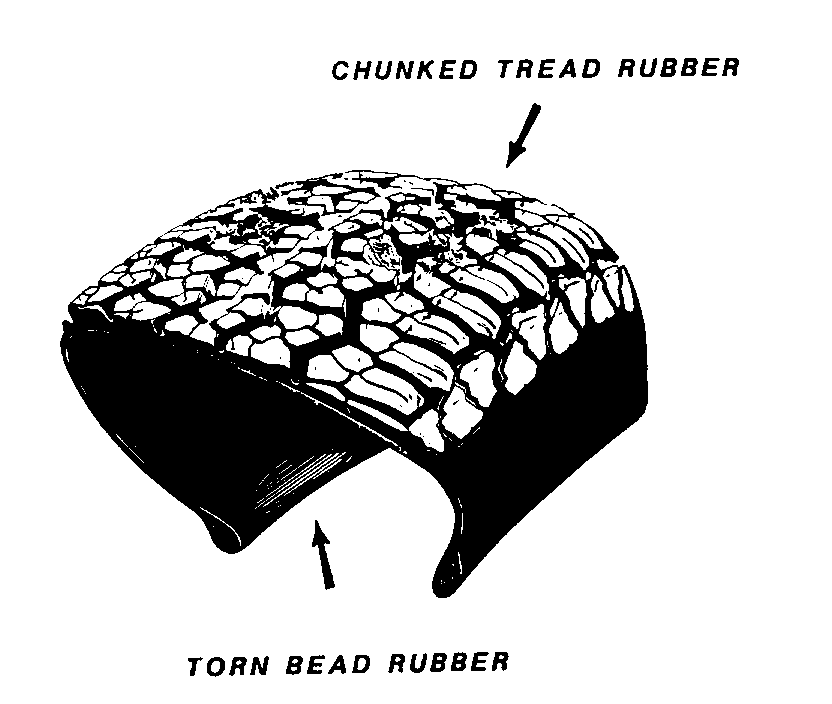TIRE DAMAGE CAUSED IN GM ASSY. PLANTS-REPLACEMENT PROCEDURES

SUBJECT: TIRE DAMAGE CAUSED IN GM ASSEMBLY PLANTS - TREAD CHUNKING, TORN BEAD RUBBER (REPLACEMENT ON TIRES)
VEHICLES AFFECTED: 88-91 CARS/TRUCKS
Isolated incidents of the following types of tire damage have recently been reported from the field. Any such damage would be present at time of delivery to the dealer. The probable cause of some of this damage has been traced to the assembly plant. Since such tire conditions are usually not the fault of the tire manufacturer, any tires requiring replacement for these reasons should be considered GM's responsibility. Assembly plant damage should not be confused with transportation damage, which continues to be the responsibility of the transportation company. The purpose of this bulletin is to help identify assembly plant tire damage.
Tread Chunking
This condition is identified by small pieces of tread rubber torn or "chunked" out of the tire. This usually occurs in one area of the tread, although more than one area is possible. The missing tread rubber should be apparent upon visual inspection. It can also usually be detected as a once-per-rev tire noise upon road testing. This condition can happen in the assembly plant during the end of line line roll test. Hard braking such that the tire locks up on the roll could be the cause, although other variables during the roll test can also be factors. Other types of tire tread damage noted at delivery should be considered transportation damage.
Torn Bead Rubber
This condition is usually not visible unless the tire is dismounted from the wheel and, therefore, may not be detected during new vehicle inspection. Depending on the extent of the tear, the condition may later be detected as a slow air loss, or a slight sidewall bulge. If the tire is dismounted from the wheel and bead rubber is torn, it is possible that this damage occurred in the assembly plant during tire mounting. If it happened in the plant, the tear will usually be on the inboard (blackwall) side of the tire. There should also be evidence of two tears, about 90 degrees apart, although one is usually much more apparent than the other.
Both the above described conditions occur very infrequently, with ongoing enhancements underway to reduce their occurance even further.

General Motors bulletins are intended for use by professional technicians, not a "do-it-yourselfer". They are written to inform those technicians of conditions that may occur on some vehicles, or to provide information that could assist in the proper service of a vehicle. Properly trained technicians have the equipment, tools, safety instructions and know-how to do a job properly and safely. If a condition is described, do not assume that the bulletin applies to your vehicle, or that your vehicle will have that condition. See a General Motors dealer servicing your brand of General Motors vehicle for information on whether your vehicle may benefit from the information.
